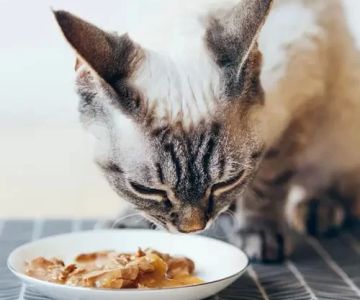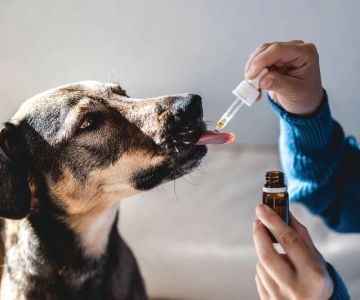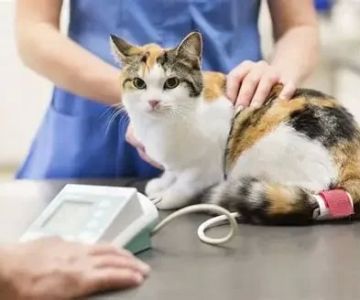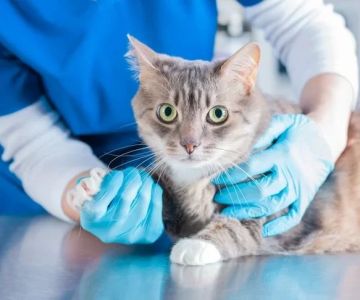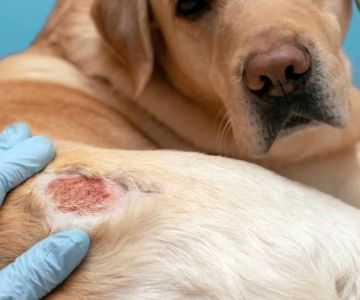Cat Weight Loss: Safe Approaches & Monitoring
- 1 - Why Weight Loss is Important for Cats
- 2 - Safe Approaches to Cat Weight Loss
- 3 - Monitoring Cat Weight Loss Progress
- 4 - Common Mistakes to Avoid When Helping Your Cat Lose Weight
- 5 - Case Study on Cat Weight Loss
- 6 - Support from Hidden Brook Veterinary
1. Why Weight Loss is Important for Cats
Maintaining a healthy weight is just as important for cats as it is for humans. Obesity in cats is linked to a variety of health problems, including diabetes, joint issues, heart disease, and a decreased lifespan. Just like in humans, excess body weight puts unnecessary strain on the heart, lungs, and joints, and it can lead to more serious conditions such as fatty liver disease. Helping your cat achieve and maintain a healthy weight is essential to improving its quality of life and ensuring a longer, happier life.
2. Safe Approaches to Cat Weight Loss
When it comes to helping your cat lose weight, it’s essential to do so safely and gradually. Rapid weight loss can lead to serious health issues, including liver problems, muscle loss, and nutritional deficiencies. Here are some safe and effective approaches to help your cat lose weight:
2.1 Gradual Dietary Changes
Sudden changes to your cat’s diet can cause digestive upset and stress. Instead, start by slowly transitioning to a lower-calorie food. Choose a high-protein, low-carbohydrate diet that will help your cat lose fat while maintaining muscle mass. Make sure to consult your veterinarian for specific dietary recommendations based on your cat’s health needs.
2.2 Portion Control
Overfeeding is one of the most common causes of obesity in cats. To help your cat lose weight, measure its food carefully and avoid free-feeding (leaving food out all day). Instead, feed your cat scheduled meals and stick to recommended portion sizes based on its weight and activity level.
2.3 Increase Physical Activity
Encouraging your cat to exercise is key to weight loss. Play with your cat using toys that mimic prey, such as feather wands or laser pointers. Active play not only burns calories but also keeps your cat mentally stimulated and engaged. A few short play sessions throughout the day will help boost your cat’s activity levels and contribute to its overall health.
3. Monitoring Cat Weight Loss Progress
Tracking your cat’s weight loss progress is crucial to ensure that the weight loss is safe and effective. Regular monitoring helps you stay on track and allows for adjustments to its diet or exercise routine if needed. Here’s how to monitor your cat’s weight loss:
3.1 Regular Weigh-Ins
Weigh your cat regularly, preferably once a week, to monitor its progress. You can either do this at home using a pet scale or take your cat to the vet for regular weigh-ins. Record the weight each time to track changes over time. Aim for a weight loss of about 1-2% of your cat’s body weight per week.
3.2 Body Condition Scoring (BCS)
Body Condition Scoring (BCS) is a visual and palpatory assessment method used to evaluate a pet’s body fat and muscle mass. Vets use this scale to determine if your cat is underweight, ideal, or overweight. It’s a great tool for assessing your cat’s progress beyond just the number on the scale.
3.3 Monitor Activity Levels
As your cat loses weight, it may become more energetic and playful. Keep an eye on its activity levels to ensure it’s becoming more active as it sheds excess pounds. A more active cat is generally a sign that the weight loss is progressing well.
4. Common Mistakes to Avoid When Helping Your Cat Lose Weight
While helping your cat lose weight, it’s important to avoid common mistakes that could derail its progress or harm its health. Here are some things to keep in mind:
4.1 Skipping Vet Consultation
Always consult your veterinarian before starting your cat on a weight loss plan. Your vet can assess your cat’s health, recommend the best diet, and rule out any underlying medical conditions that may be contributing to its weight gain. A vet consultation ensures that your cat’s weight loss plan is safe and tailored to its specific needs.
4.2 Starving Your Cat
While it might seem logical to feed your cat less food, drastically cutting its calorie intake can lead to malnutrition and other health issues. Cats need a balanced diet with the right amount of protein, fat, and vitamins to stay healthy during weight loss. Gradual dietary changes are much safer than extreme calorie restrictions.
4.3 Ignoring Exercise
Weight loss isn’t just about food—it’s also about increasing your cat’s physical activity. Don’t rely solely on diet changes to help your cat lose weight. Regular playtime and exercise are essential to burning calories and promoting muscle tone.
5. Case Study on Cat Weight Loss
Meet Bella, a 10-year-old domestic shorthair cat who was significantly overweight due to overfeeding and a lack of physical activity. Bella’s owner noticed that she had become lethargic and was having difficulty moving around. After a consultation with her veterinarian, Bella’s owner started her on a special weight-loss plan, including a calorie-controlled diet and daily playtime. Within three months, Bella had lost 10% of her body weight, became more active, and regained her playful nature. Bella’s transformation is a great example of how proper care, monitoring, and patience can lead to a healthier, happier cat.
6. Support from Hidden Brook Veterinary
If you’re concerned about your cat’s weight or need guidance on safe weight loss strategies, Hidden Brook Veterinary is here to help. Our team of experienced veterinarians offers personalized care and advice to ensure your cat’s health is prioritized. We provide expert recommendations on diet, exercise, and monitoring tools to help your cat lose weight safely. Visit us today to learn more and schedule a consultation for your cat’s weight loss journey!




